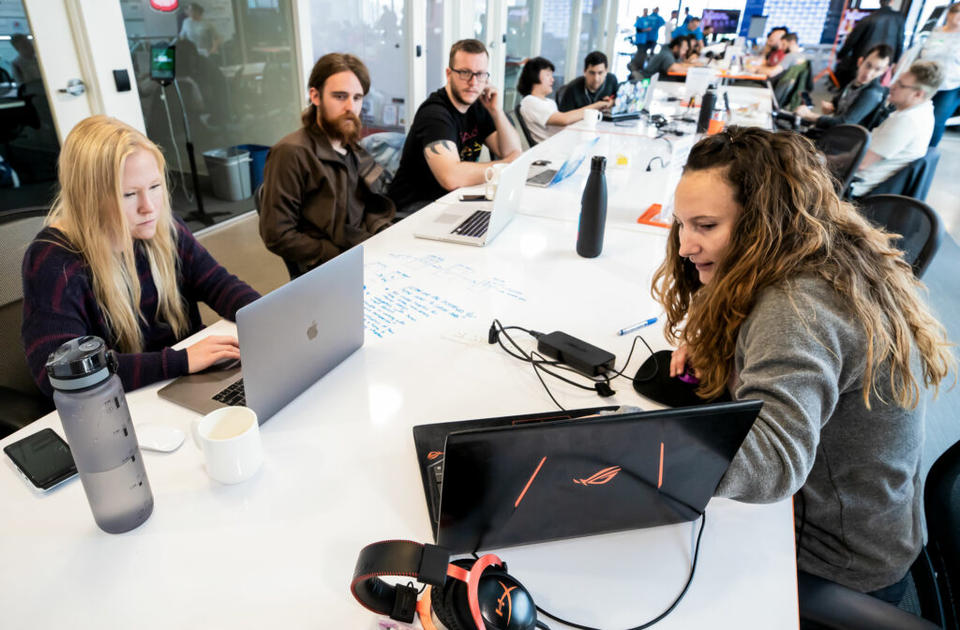Tech to Protect Challenge: From Interior Design to UX at the Denver Tech to Protect Challenge Hackathon

Three Women Develop Winning Technology to Improve Firefighter and Citizen Safety
When Emily Schisler signed up for the Tech to Protect Challenge in Denver, Colorado, she didn’t know what to expect. And she most certainly didn’t plan to win $8,500 in cash prizes for her two submissions at a national hackathon for public safety technology.
“I’m new to the industry, so I had never done a hackathon before, and I didn’t know to what extent my skill set could contribute to someone’s project,” said Schisler.
Having just completed a transition from interior design to User Experience design, or UX, Schisler wasn’t sure where her skills fit, but she knew she had an interest in solving communication challenges for the emergency responder community.
“I had a personal connection to it. My mom had a brain aneurysm when I was 18,” recalled Schisler. “The morning that she had it, I woke up to the paramedics in my bedroom and her on the floor. She was rushed to the emergency department ICU.”
Contrasting Teams with Complementing Skills
Despite walking into the competition alone, she quickly found a group of people to collaborate with on a contest. Schisler first met a data scientist named Stephanie, and they immediately connected.
The two teamed up with three other participants and they worked on choosing a challenge. After brainstorming and discussing their collective talents, including UX design, computer learning and mobile app development, they landed on Tech to Protect Contest #5—Fire Safety in 3D: Incentivizing Homeowners to Create Pre-Incident Plans for Firefighters.
The challenge at hand was to find a way to encourage citizens to create fire safety checklists and pre-incident plans of their homes using 3D cameras found in common consumer technology like smartphones, tablets and AR/VR headsets. To solve it, Schisler and her team made sure to consider the project’s intended audiences.
“It wasn’t just for a homeowner and it wasn’t just for firefighters; it was for both,” said Schisler. “Which is an interesting group to design for because they’re so different, but the need to improve the safety of those in a fire emergency was the common goal.”
Unexpected Speed Bumps Turn to Victory
On the second day of the codeathon weekend, they found themselves only a three-women team at the Denver event—a UX designer, data scientist and one front-end developer. But with a newfound competitive spirit, Schisler and her remaining teammates felt it was an even more fun venture to pursue.
“Ultimately it ended up being that I found a group of super-talented, intelligent women, and we all connected and brought different skills and backgrounds to the challenge, which I think helped create a more well-rounded project that made it that much more successful,” noted Schisler.
When it came to the final round of judging, the three knocked it out of the park after practicing in mock presentations. With only three minutes to hit on three major criteria in the competition, they had to put their heads down, cut all of their “fluff” and focus on the key elements of the mobile application’s design.
After impressing the judges, winning the challenge, and taking home two prizes for their resulting pitch, the team is just getting started. Curious how they did it? Unfortunately, Schisler can’t tell you, as they’re in the process of developing their solution to submit to the program’s online contest.
“It was a tough weekend, but also really rewarding and surprisingly energizing,” she said.

